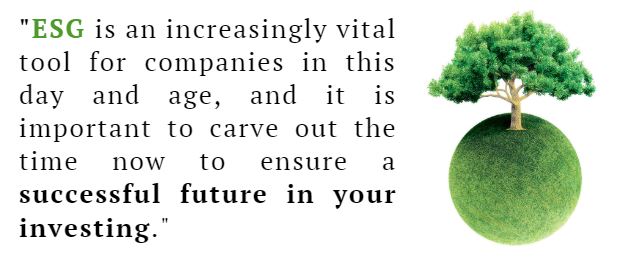Have the gluten-free cake and eat it too: a case for ESG integration into standard portfolio management
Institutional investors, who have become aware of the benefits of ESG (environmental, social, and governance) policy and impact investing, still struggle when it comes to integrating this policy into their general portfolio management strategy.
According to Blackrock, in 2018, more than 83% insurers indicated ESG as being important to their firm, and one does not expect this number to shrink anytime soon. ESG is quickly on the rise, so the next logical step within the investment game is finding a way to combine ESG into the standard portfolio management strategies.
We see sophisticated investors with on the one hand, a dedicated ESG process, based on internal analyst teams, independent partners for ratings and reporting to the management, while traditional portfolio managers remain in charge of the investment management. The next challenge is to handle the two sides of this same coin jointly together as one single investment policy. Many investors find it difficult to achieve the perfect balance for their specific purposes.
ESG and portfolio management remain in different silos
Take the notion of “risks”, for example. This traditionally refers to volatility, VaR, CVaR, Sharpe ratio, max drawdowns, and other purely financial ratios. But since the ESG criteria have appeared, one could see some as risks, too, and treat them as such.
What if your portfolio exceeded its overall ESG threshold, or is invested in securities which have been excluded by some research houses, or does not respect your standards? These are all questions that portfolio managers are running into more and more often.

If upon being aware of such a situation, the management requires the portfolio management team to act promptly and adjust their position by selling the respective funds, ETFs or positions, it will immediately have an impact on the so-called traditional risk metrics, which will also lead to new portfolio adjustments, and so on. This can easily bring the company to sub-optimal decisions and costs. The domino effect is not to be ignored and can pose consequences that may not be immediately evident.
On the other hand, should both ESG criteria and financial ratios be considered, the risk management strategy will take into account both metrics and consider buying or selling assets in order to optimise them together, making it easier to determine the best course of action for both the short-term and the long-term goals of the institution.
Similarly, when it comes to performance, institutions tend to focus on financial ratios only, and they will often look at the portion of their return coming from different countries, sectors, currencies, or internal specific axes. At some point, looking at performance also from an ESG point of view will bear its fruits, as it is the only way to ally long-term financial objectives and ESG strategy, in a combined ESG performance analysis.
ESG – an increasingly vital tool for companies
At QUANTILIA, we have seen cases where investment managers have defined their ESG policy in a way which was not exactly suited to their portfolio, so that their investment guidelines were sometimes too tight to reach performance targets, and sometimes too lose to really stick to the general aspiration of the institution.
What if you consider minimum and maximum concentration of companies being in a given range of ESG score per countries, knowing that the position per country is fluctuating in extreme proportions between geographies? It brings imbalance in the portfolio construction which no portfolio manager will be able to smooth.

While it can seem difficult to achieve the perfect balance, ESG is an increasingly vital tool for companies in this day and age, and it is important to carve out the time now to ensure a successful future in your investing.
The nature of ESG scores themselves, made of multiple criteria, brings a possible integration with other metrics. Take the UN Sustainable Development Goals (SDGs), for example. They cover various topics such as the need for sustainable cities and communities, decent work and economic growth, industry innovation and infrastructure, or affordable and clean energy. One can figure out how closely tied these domains are between ESG and financial objectives, giving a more well-rounded picture overall.
ESG makes it much simpler to achieve the balance that is vital to maintaining the success of an institution in the long-term.
With modern data management techniques, it is possible to define and chase at the same time financial and non-financial objectives, giving today’s companies an edge that has only recently become achievable. By mixing usual ratios with ESG metrics, one can create a portfolio management strategy which will take care of both objectives at the same time in a streamlined manner.

Concretely, the new assets to be included in a portfolio will not only have to go through a strict market screening, but they will also have to fit properly within the existing portfolio. The screening of each security will be made so as to match the long-term performance objective of the institution, the amount of risk it can swallow, and its ESG standards. Rebalancings will take into account the stability of the ESG ratings of securities. Investment committees will debate, at the same time, macroeconomic data, global market evolutions, and trends in the sustainability of the investments made.
We believe such an approach would provide a benefit not only to institutional investors’ management, but also to the respective portfolio managers and ESG teams. Additionally, beyond portfolio efficiency, another positive outcome from ESG investing will be that teams and departments work more closely together, with a common goal. When the entire team can come together to reach a specific endpoint, everyone is able to show his or her skills and work more efficiently. This manner of working will benefit the individual employees, the company, and their clients, as a whole today and in the future.


